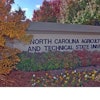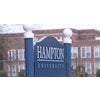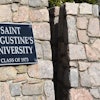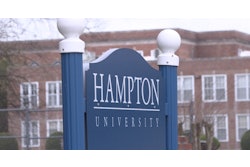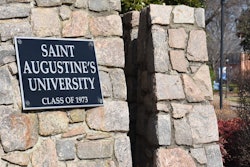Historically Black Colleges Strive to Bring Campus Communities Up to Technological Speed
But are they catching up?
By Kendra Hamilton
Administrators at Morris Brown College were not prepared for the response they received when they made two announcements last year. First, the campus was going wireless and, second, every student and faculty member would be required to have a laptop computer. The second announcement nearly sparked a student revolt.
“It was pretty embarrassing,” says Dr. Dolores E. Cross, president of Morris Brown College in Atlanta. “The students actually protested. I couldn’t believe it. There I was at the plaza saying to them, ‘You came in under-served. We’re working to guarantee that you don’t leave here under-served.'”
Not making much headway, the college went the celebrity endorsement route — bringing in Tony Brown of “Tony Brown’s Journal” to provide his brand of politically savvy common sense before the student body was reconciled to the change. Now that the campus community has the laptops in hand, the protests are a distant memory.
“I think they saw it [required laptops] as just another burden, just another assignment, so we basically had to persuade the students to take the risk of investing in themselves,” Cross says. “But now that they have, there’s a new attitude on campus. It’s increased morale and raised expectations.”
When Cross talks about the Black community being under-served, she’s also referring to the technology gap — commonly referred to as the “digital divide” — the technology and information gap that keeps the poor, the rural and overwhelmingly minority populations from participating in or benefiting from the information technology revolution.
Mirroring the larger society in which minority and poor populations are disproportionately at a disadvantage in terms of access to computers, the Internet and other telecommunication services, it is a similar situation within the community of historically Black colleges and universities, where there are technology “haves” and “have nots.”
But for the first time since Yahoo!
Internet Life magazine began publishing its “Most Wired” campus lists in 1997, three HBCUs — Morehouse College, Hampton University and Tennessee State University — made it onto the lists in 2000.
Grant writing equals
laptops
Johnson C. Smith University is an example of an HBCU “have,” where savvy grant writing has made it possible for every student on campus to have a laptop.
“Some hours a day, we’d have 1,200 computers online, and for a campus of 1,500, that’s a lot of usage,” says Dr. Don Majer, Mott Professor of English and co-director of the liberal arts major at the Charlotte, N.C., university.
Dr. Dorothy Cowser Yancy, president of JCSU, says the goal was never to be known as a school with computers.
“We’ve always been oriented toward being a school in which the technology enhanced the teaching,” Yancy says.
JCSU started with a “white paper” on teaching and technology in which it articulated a desire to focus on collaboration and teaming, says Frank Parker, director of information/services. And so the faculty began pursuing grants to make that focus a reality.
Parker, for example, partnered with Dr. Phyllis Worthy Dawkins, director of faculty development and co-director of the HBCU Faculty Development Program, to garner a $500,000 grant from the Andrew Mellon Foundation that has allowed JCSU to create a series of campus “learning communities.”
In one component of the project, groups of courses in various departments were organized by themes — for example, “The Civil Rights Movement in North Carolina.” While one group of students conducted the oral interviews, another group worked on photography and graphics, another on text writing or the creation of multimedia presentations.
Approximately 100 students engaged in what Dawkins calls “cross-course environments.”
In another component, a group of courses in various disciplines shared assignments. If students worked on a project in a biology class, the project would be reinforced by a PowerPoint presentation on the topic in a computer science course and again in a speech class with a debate or similar presentation.
Additionally, these experiments in learning and cross-course environments were interwoven with improving the university’s technology infrastructure.
“We wired our residential halls, improved our multimedia classroom development and completely digitized our foreign language lab,” says Parker.
These efforts culminated with the phase-in of laptop computers for the entire student body in the fall of 2000.
And by creating and maintaining a strong focus on faculty training and development, interesting things have begun to happen in the classroom. The English faculty has become the most technologically savvy department on the campus, says Yancy, and Majer is a part of the reason why.
“I always start by thinking, ‘What is something that I’ve always wanted to do that I’ve never been able to do before?'” Majer says.
And so his first assignments for students revolved around such projects as using the Web to allow them to view the original text of a Shakespearean play they were studying.
“The kind of thing that you would never be able to do unless you were at a big university with extensive library holdings,” he says.
This semester, in particular, Majer is having students in his Romantic poetry class use the CD-ROM that came with their textbook to create annotated texts of long poems. Majer sees it as a way of teaching the focused reading skills one needs to master the long, difficult poems that are on the syllabus.
But in general, his approach is a simple one.
“I try to come up with the greatest variety of possible uses of the technology,” Majer says. “I think where the digital divide really hurts is in developing a comfort level. I don’t so much want the students to master specific skills as to see the computer as a tool to solve different problems. I want them to be totally unintimidated.”
And the approach appears to be working.
“I’ll ask them to do something — and specify the method. But when the assignment comes back, the student may have used a totally different approach that’s actually better than the one I suggested,” Majer says.
Getting HBCUs Caught Up
So are HBCUs bringing their campuses up to technological speed? The answer is some of them.
Howard University students arrived on campus last fall and found a new amenity — the ability to access the campus computer network through a wireless connection. Howard’s $5 million, 21,000 square-foot iLab, which opened in the spring of 2000, houses in addition to an array of colorful Apple iMac computers, the university’s Center for Excellence in Teaching and Learning. The center assists faculty members in incorporating technology into their teaching. The iLab, which serves students as well as faculty, also supports a variety of functions such as distance education.
And for Morris Brown College, laptop ownership is just the first part of the puzzle. The college has formed a partnership with the city of Atlanta to create an intergenerational technology center that will serve the surrounding neighborhood.
The center, staffed by student mentors and an academic computing professional, will be open Monday through Saturday.
“We’re taking this to the next level,” says Cross of the effort to bridge the digital divide not just on the Morris Brown campus but in Atlanta’s Black community as well. “We hope to have elementary and secondary school-age students, their parents and the elders in the community all under one roof.”
But many HBCUs are still playing catch up.
While the best programs and the savviest schools are looking beyond the problem of “infrastructure, infrastructure, infrastructure,” as Cross puts it, others have yet to realize that the goal of simply getting a computer into every American classroom is already obsolete.
In an effort to get more HBCUs caught up, Black colleges and universities hosted several digital divide conferences over the past year.
Tennessee State University with support from the America Online Foundation, conducted a two-day focus group-oriented event in Atlanta last fall that examined how Black institutions could catch up to majority White institutions in terms of resources and productive use of information technology.
Also in Atlanta, Clark Atlanta University convened the second annual HBCU/MI Educational Technology Expo. The conference highlighted initiatives aimed at tackling the digital divide in the broader society in addition to focusing on what HBCU officials could do to alleviate technology gaps on their campuses (see Black Issues, Nov. 23, 2000).
In Virginia, Norfolk State University and Hampton University hosted digital divide conferences on their respective campuses in 2000.
“Individual HBCUs have a lot to share with other HBCU campuses in the area of [information] technology,” says Debra White, Hampton University’s assistant provost for technology.
Does a divide really exist?
According to the United Negro College Fund and U.S. Department of Commerce statistics, the average U.S. college or university owns one computer for every 2.6 students; at UNCF institutions, the ratio is 1-to-6. And the rates for faculty are almost as grim: 71 percent of all college faculty own computers, while 45 percent of faculty at UNCF institutions do. In addition, White households are twice as likely to have a computer and three times as likely to have Internet access than Black or Hispanic households.
The study, Historically Black Colleges and Universities: An Assessment of Networking and Connectivity, released by the National Association for Equal Opportunity in Higher Education (NAFEO) last fall, found that although HBCUs are more wired than originally assumed, fewer than 25 percent of HBCU students bring their own computers to school, compared to nearly 50 percent of non-HBCU students.
Yet and still, some people doubt that a digital divide exists.
While laying out his agenda for reporters in February, new Federal Communications Commission Chairman Michael K. Powell (son of Secretary of State Colin Powell) hinted that he does not buy in to the idea of a “digital divide.”
“I think there is a Mercedes divide,” Powell said. “I would like to have one, but I can’t afford one,” (see full story, pg. 33.)
“Well, I don’t know if Mr. Powell speaks for the [Bush] administration, so I would rather tell you what I know,” says William H. Gray, president and CEO of the UNCF. “There is a digital divide.”
And last September in Insight magazine, Adam Thierer, a fellow at the conservative Heritage Foundation, castigated NAACP President Kweisi Mfume and the Rev. Jesse Jackson for “divisive” and “extreme” language about the divide and said that the workings of the free market would quickly close any existing technology gap.
“If you look at African Americans as a group, we are still lower-middle income to working class and poor,” Gray says. “And as lower-middle income, working poor and underclass people, we do not have access and ownership of computers even when compared with White counterparts in the same economic class. Every study, private and public, has documented that.”
Mobilizing around the divide
It is this reality that has mobilized a broad array of regional and national organizations and members of the information technology industry around the digital divide.
For example, the UNCF, through partners such as Microsoft, IBM, Dell and Sun Microsystems, has invested more than $100 million in information technology infrastructure at its 39 member institutions. Sixty-five million of that amount was received in 2000 — the kickoff year of the UNCF’s Technology Enhancement Capital Campaign.
The National Society of Black Engineers (NSBE) has weighed in on the issue with the national Technical Outreach Community Help (TORCH) program, aimed at improving access in under-served communities by creating a series of community-level computing centers.
According to a report by the Web-based Education Commission, which includes leaders from business and industry, and senators from both sides of the aisle in Congress, the most meaningful future applications of technology will involve video and audio. This means schools will need not just computers and Internet access but broadband networks capable of instantly transmitting sound and images, as well as people who can use and repair them.
“There’s a third piece [to the digital divide] that many people have not clued in to,” says Ramon Harris, director of the Technology Transfer Project for the Washington-based Executive Leadership Foundation.
“I’ve spent a lot of time looking at why majorities, even those of low income, pursue information technology at a greater rate than other communities with similar income levels,” Harris says. “The digital divide cuts along economic lines, and it cuts along social lines. But it also cuts along cultural lines. Yes, money is an issue, but in the African American community, even at the same income levels, we’re still much less likely to acquire the tools to access the Web.
“So I would say there’s a cultural problem in terms of what the culture values,” Harris says. “The so-called ‘digital divide’ is really a symptom of a problem that’s existed a long time. And that’s education. Do we really value education as highly as other communities? That’s what we have to ask ourselves.”
Related Story
Historically Black Colleges Strive to Bring Campus Communities Up to Technological Speed
© Copyright 2005 by DiverseEducation.com

